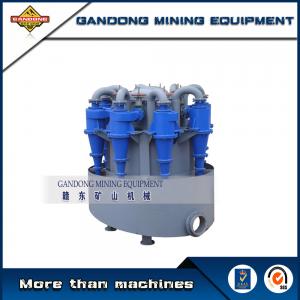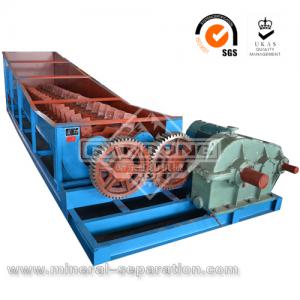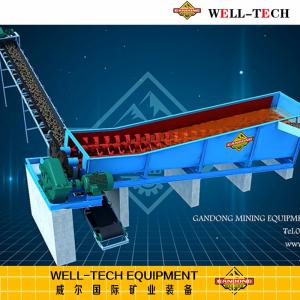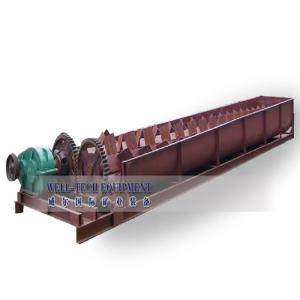Hydrocyclone is mainly used in mineral processing as a classifier, and has proved extremely efficient at fine separation sizes. It is used increasingly in closed circuit operations but has found many other uses, such as desliming, deritting and thickening. It has also found wide acceptance recently for the washing of fine coal. Compare with mechanical classifier, it has the advantage of simple structure, a larger production capacity per unit volume, small occupation space, high efficient classification efficiency (up to 80% -90%), fine grading granularity, low cost, less material consumption and so on.
In closed circuit grinding system, it features high classification efficiency and fine overfall fineness under high mine concentration. Classification efficiency is higher for 5-10% than common screw grader. It benefits for enhancing grader utilizing coefficient.Choose proper specification and mode of cyclone according to grinding processing capacity, overfall fineness and sedimentation concentration. This is precondition of getting the most optimized work condition.
Our company is able to offer stand-alone, parallel connection machine or machine series in such specs as Φ50, Φ75, Φ100, Φ125, Φ150, Φ200, Φ250, Φ300, Φ350, Φ500 and Φ660.Fine sand, less than 37μm, in gangue can not be used as dam materials during selecting mine. After the classification by cyclone, coarse granule left in the bottom of dam, fine granule move to the tail of gangue. Fine granule graded naturally during the movement. There is section full of clean water, which can be used for calling back of water. In the process of filling tail, we utilize cyclone for grading and concentrating to separate coarse granule so that to reduce load of filtering machine and to reach at the best effect. Use cyclone to finish dam and filling work so that to solve problems such as leaking mine, sink and overproof water discharged. So it can receive obvious economic and social benefit.
Main technical parameter of polyurethane hydrocyclone (hydro cyclone)
| Model | Overflow exit dia. (mm) | Underflow exit dia. (mm) | Capacity (m3/h) | Feeding pressure (Mpa) | Classification size (um) | Weight (Kg) |
| FX660 | 180-240 | 80-150 | 250-300 | 0.03-0.2 | 74-220 | 995 |
| FX500 | 130-200 | 35-100 | 140-220 | 0.03-0.3 | 74-150 | 540 |
| FX350 | 80-120 | 30-70 | 60-100 | 0.04-0.3 | 50-150 | 230 |
| FX300 | 65-115 | 20-50 | 45-85 | 0.04-0.3 | 40-150 | 108 |
| FX250 | 60-100 | 16-45 | 40-60 | 0.06-0.35 | 40-100 | 72 |
| FX200 | 40-65 | 16-32 | 25-40 | 0.06-0.35 | 30-100 | 60 |
| FX150 | 30-45 | 8-22 | 11-20 | 0.06-0.35 | 30-74 | 22 |
| FX125 | 25-40 | 8-18 | 8-15 | 0.06-0.35 | 20-74 | 12 |
| FX100 | 20-40 | 8-18 | 5-12 | 0.06-0.35 | 20-100 | 8 |
| FX75 | 15-22 | 6-12 | 2-5 | 0.1-0.4 | 20-74 | 7 |
| FX50 | 11-16 | 3-8 | 1-2 | 0.1-0.4 | 10-74 | 2 |

 China
China



